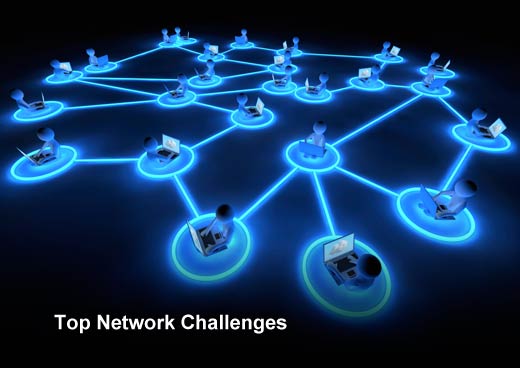It doesn’t look like network engineers are going to get much of a rest in 2015; instead, their job is growing more difficult each day as an increasing number of complex tasks lands on their desks. From static budgets to higher bandwidth demand to constant and evolving security threats, network engineers have their work cut out for them. Still, solutions do exist that can help lighten the load for these IT professionals. With that in mind, here’s a list of some of the high-priority obstacles engineers will face in this year and the products that can help them meet those challenges, from Jay Botelho, director of product management at WildPackets, Inc.
WildPackets, Inc., founded in 1990, develops hardware and software solutions that drive network performance, enabling organizations of all sizes to analyze, troubleshoot, optimize, and secure their wired and wireless networks. WildPackets products are sold in over 60 countries and deployed in all industrial sectors. Customers include Boeing, Chrysler, Fidelity, Motorola, Nationwide, and over 80 percent of the Fortune 1000. WildPackets is a Cisco Technical Development Partner (CTDP).
Top Network Challenges
Click through for the top challenges network engineers will face in 2015, as identified by WildPackets.
Handling More Traffic on a Similar Budget
According to Gartner, global IT spending rose just 2.1 percent in 2014, less than earlier predictions of 3.2 percent. A similar increase in overall IT spending is forecast for 2015, yet some analysts predict network traffic will double year over year. This means network engineers will need to handle significant increases in existing network utilization, without additional personnel, meaning they will have to adopt or make better use of high-speed network monitoring solutions to ensure that problems are prevented or resolved quickly.
Ensuring QoS with Increased High-Bandwidth Traffic
Organizations, supporting more complex customer-facing applications and increased use of enterprise video, VoIP, and other high-bandwidth internal traffic, are being forced to ramp up bandwidth. This shift to network speeds of 10G or higher, however, presents a monitoring problem for engineers; if they can’t see the network traffic, they can’t troubleshoot in real time, and network performance suffers for employees and for customers using the organization’s applications. As a result, network and application performance monitoring solutions will become critical to keeping systems running smoothly.
Dealing with Increasingly Frequent and Complex Security Threats
Unfortunately, 2014 was a banner year for hackers and a trying year for IT security and C-level executives. Malicious hacks and data breaches have a profoundly negative impact on infiltrated companies’ public image and fiscal health, and the frequency of attack is sure to grow in 2015. Spending on cybersecurity is already rising, with the research firm MarketsandMarkets predicting the global market will reach $155.75 billion by 2017, up from $95.60 billion in 2014. As more businesses look to adopt high-quality cyber attack analysis and network forensics solutions, those numbers may grow even larger.
Adapting to Changes as Wi-Fi Continues to Evolve
With BYOD affording many employees the opportunity to connect to networks from more than one device – not to mention the fact that across the enterprise, organizations are grappling with the technical complexities of the 802.11ac Wi-Fi standard – network engineers have their hands full with bandwidth issues as the Wi-Fi ecosystem adapts to the glut of personal devices.
Keeping Control of Corporate Data
With Google Drive, Dropbox and other collaboration technologies, corporate data is scattered all across the Internet. Network engineers will need to find a way to manage and control sensitive corporate data, either with policies or hard and fast network rules regarding collaboration technologies like the ones mentioned.
Will Your Engineer Be Ready?
Your network engineer is going to face some serious issues in 2015 — that is not in doubt. What remains to be seen is whether that engineer will be able to handle these challenges, which will depend largely on the tools at your organization’s disposal.









